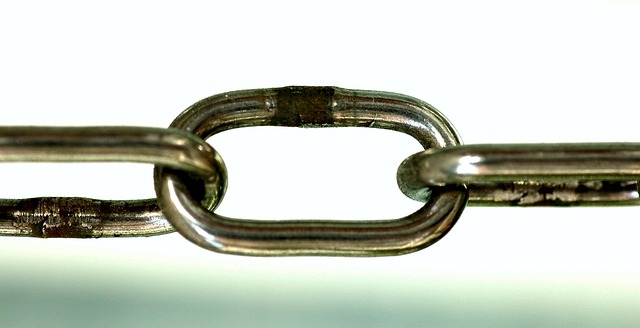Identifying and fixing broken links is crucial for internal linking optimization. Use tools to detect 404 errors and manually check complex areas. Optimize link equity distribution by analyzing anchor text, referring domains, and page authority. Prioritize high-quality content with strategic anchor text for better user experience and SEO. Re-link broken pages, optimize structure, and eliminate low-quality links for enhanced performance. Regularly monitor progress using analytics tools to make data-driven adjustments.
“Struggling with internal linking issues that hinder your website’s performance? This comprehensive guide is tailored for users seeking to optimize their site structure. We’ll walk you through a strategic approach to fixing broken links, focusing on leveraging link equity distribution. By understanding how to identify problematic areas, prioritize pages, and implement structural changes, you can enhance your website’s navigation and search engine visibility. Discover effective tools and techniques to assess and maximize link equity, ensuring a robust online presence.”
- Identify Broken Links: Tools and Techniques
- Evaluate Link Equity Distribution Across Pages
- Prioritize Pages for Internal Link Optimization
- Strategize Re-linking: Replacing Broken Connections
- Implement Structural Changes for Better Link Flow
- Monitor Progress: Measuring Link Equity Improvement
Identify Broken Links: Tools and Techniques

Identifying broken links is a crucial step in fixing internal linking issues. Fortunately, there are several tools and techniques available to help website owners pinpoint these problematic areas. One popular method involves using site audit tools that scan your entire site for any 404 errors or missing pages. These tools provide detailed reports on broken links, allowing you to quickly visualize and prioritize the fixations.
Additionally, manual checking can be an effective strategy. This involves navigating through your website’s structure, especially in areas with complex navigation or frequent content updates, to ensure every link points to a valid page. Some SEO experts also recommend leveraging browser developer tools to simulate user interactions, revealing broken links as they would appear to search engine crawlers. Optimizing link equity distribution is key here—ensuring that your internal links direct page authority effectively across your site, enhancing overall SEO performance.
Evaluate Link Equity Distribution Across Pages

Evaluating link equity distribution is a crucial step in identifying and rectifying internal linking issues within your website’s architecture. This process involves understanding how link equity, or the value passed from one page to another through backlinks, is being allocated across all pages on your site. A well-optimized link equity distribution ensures that important pages gain the necessary authority to rank higher in search engine results.
Using a combination of SEO tools and manual analysis, you can assess the flow of link equity by examining anchor text, referring domains, and page authority. This provides insights into which pages are benefiting from internal links and where adjustments might be needed. A strategic approach, like creating a comprehensive link equity distribution tutorial or optimizing your site’s structure based on this data, can significantly enhance overall SEO performance.
Prioritize Pages for Internal Link Optimization

When optimizing internal linking, prioritizing pages is key to effective link equity distribution. Start by identifying the most important and valuable pages on your website. These are typically high-quality content pieces that are central to your site’s structure and user experience. Think about pages with higher traffic, lower bounce rates, or those crucial for conversion. Focusing on these pages first ensures that the link equity is directed towards the most influential areas of your site.
A link equity distribution tutorial suggests using anchor text strategically when linking internally. Use descriptive and contextually relevant anchor text that accurately represents the linked page’s content. Avoid generic keywords and over-optimizing; instead, aim for a natural flow of links that enhances user experience. By carefully selecting pages to optimize and implementing these link equity distribution tips, you can significantly improve your site’s overall SEO performance and ensure that internal linking contributes positively to your website’s success.
Strategize Re-linking: Replacing Broken Connections

When dealing with broken or weak internal linking, strategizing re-linking is a crucial step in repairing your site’s structure. Start by identifying all the broken links using tools that scan your website and provide detailed reports on their health. Once identified, manually inspect these links to understand why they broke—whether due to changes in page URLs, content updates, or platform migrations. This process will help you devise a more effective re-linking strategy.
Instead of simply replacing the broken links with new ones, focus on optimizing link equity distribution. A well-planned re-linking strategy involves not only fixing broken connections but also ensuring that your link equity is distributed evenly across relevant pages. Utilize a link equity distribution tutorial or tips to guide you in managing anchor text and link placement. Remember, the goal is to create a network of internally linked pages that enhance user experience and boost search engine optimization (SEO) performance.
Implement Structural Changes for Better Link Flow

To effectively implement a link equity distribution strategy, it’s crucial to understand that internal linking isn’t just about establishing connections between pages; it’s about guiding users and search engines through your site’s information architecture. Start by assessing your current link profile using tools like Google Search Console or specialized SEO audit plugins. Identify weak links, broken anchors, and missing contextual cues. Once identified, make strategic changes to your site structure: reorganize content into a logical hierarchy, create meaningful categories, and ensure each page has relevant inbound links from authoritative sources within your site.
This link equity distribution optimization process involves redistributing link equity by eliminating low-quality or redundant links and enhancing the strength of internal connections. When restructuring, focus on creating a natural flow that mirrors user behavior. Implement breadcrumb navigation, facilitate easy access to related content, and use anchor text that accurately represents the linked page’s content. By following these steps, you’ll not only fix broken links but also create a robust internal linking structure that boosts link equity distribution tutorial and improves both user experience and search engine visibility.
Monitor Progress: Measuring Link Equity Improvement

Monitoring progress is a crucial step in optimizing your site’s internal linking and improving link equity distribution. By setting up tracking tools, you can measure the impact of your efforts and identify areas that need further attention. Analyze the changes in link equity over time to understand which pages are benefiting from the fixes and where improvements are still required. This data-driven approach allows for informed decision-making and ensures that your internal linking structure is aligned with your site’s overall SEO goals.
Utilize SEO analytics platforms to gain insights into how search engines perceive your website after implementing these changes. Keep in mind that link equity distribution tips and tutorials can guide you, but ongoing optimization is key. Regularly review the performance of your pages and adjust your strategy accordingly. This continuous process will help you stay ahead of any issues and maximize the benefits of a well-structured internal linking system.
